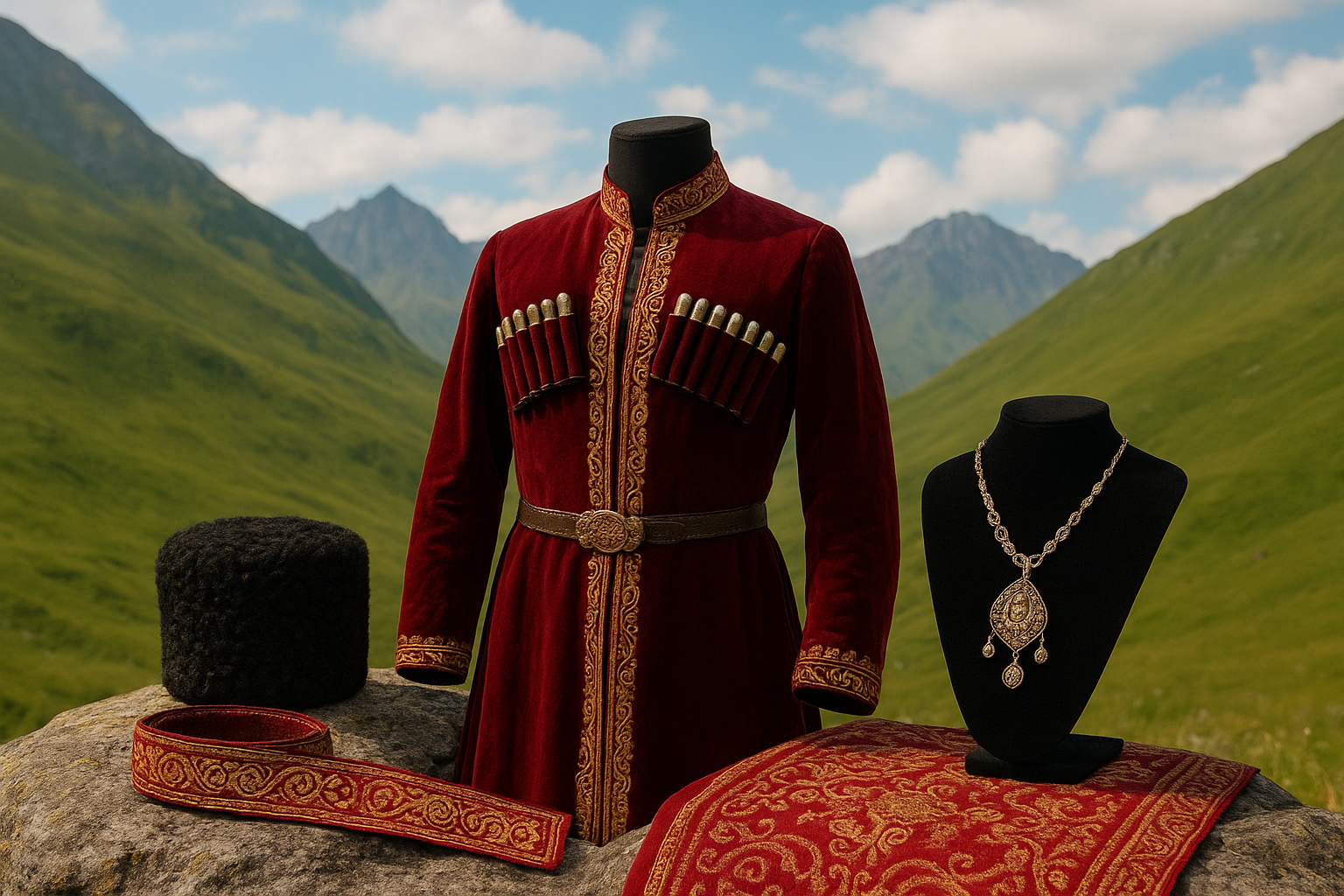
Georgia is a land where history is not hidden — it is worn, lived, and celebrated every day. Traditional Georgian clothing and jewelry are more than decoration; they are stories of identity, faith, protection, and regional pride. Every fabric, ornament, and symbol has meaning. The chokha, Georgia’s most iconic garment, represents bravery and honor. Originally military wear, it protected men from cold mountain climates and symbolized a warrior’s duty. The bullet holders (masrebi) on the chest are decorative today, but once carried real ammunition. Chokha colors reflected status: black for nobility, grey or brown for everyday life, and white for celebrations. Beneath it, men wore the fitted arkhalukhi, often embroidered, adding elegance and cultural refinement. Women’s traditional dress was long, flowing, and modest, emphasizing dignity. Dark colors were worn daily, while festive attire featured deep burgundy, emerald green, or royal blue, paired with gold embroidery. Belts held deep meaning — symbolizing honor, responsibility, and protection, often gifted at weddings as a sign of unity. The papakhi (mens’ wool hat) symbolized pride, believed to be worth more than life itself, while women’s veils and headpieces reflected modesty and grace. Each region of Georgia added its own identity — Khevsureti’s clothing stood out with bold cross symbols and geometric embroidery believed to offer spiritual protection, while Tusheti favored earthy tones and practical wool layers for its harsh climate. Ornaments were equally symbolic. Georgian jewelry commonly featured crosses, the Tree of Life, sun symbols, grapevines, and birds — representing faith, eternity, fertility, freedom, and connection to nature. Enamel (Minankari), a uniquely Georgian art form, brought color to silver jewelry with deep blues, greens, and reds that symbolized sky, earth, and vitality. One of the most mysterious and powerful accessories was the avtandil chichilaki amulet, a protection charm against evil, often gifted to children. Traditional clothing and jewelry are still honored today at weddings, celebrations, and cultural performances — not as costumes, but as ancestral memory carried forward with love. When you visit Georgia, you don’t only taste the food or admire the landscapes — you meet the spirit of a nation woven into cloth, silver, and symbols that have survived centuries with unchanged pride.






 Deutsch
Deutsch
 русский
русский
